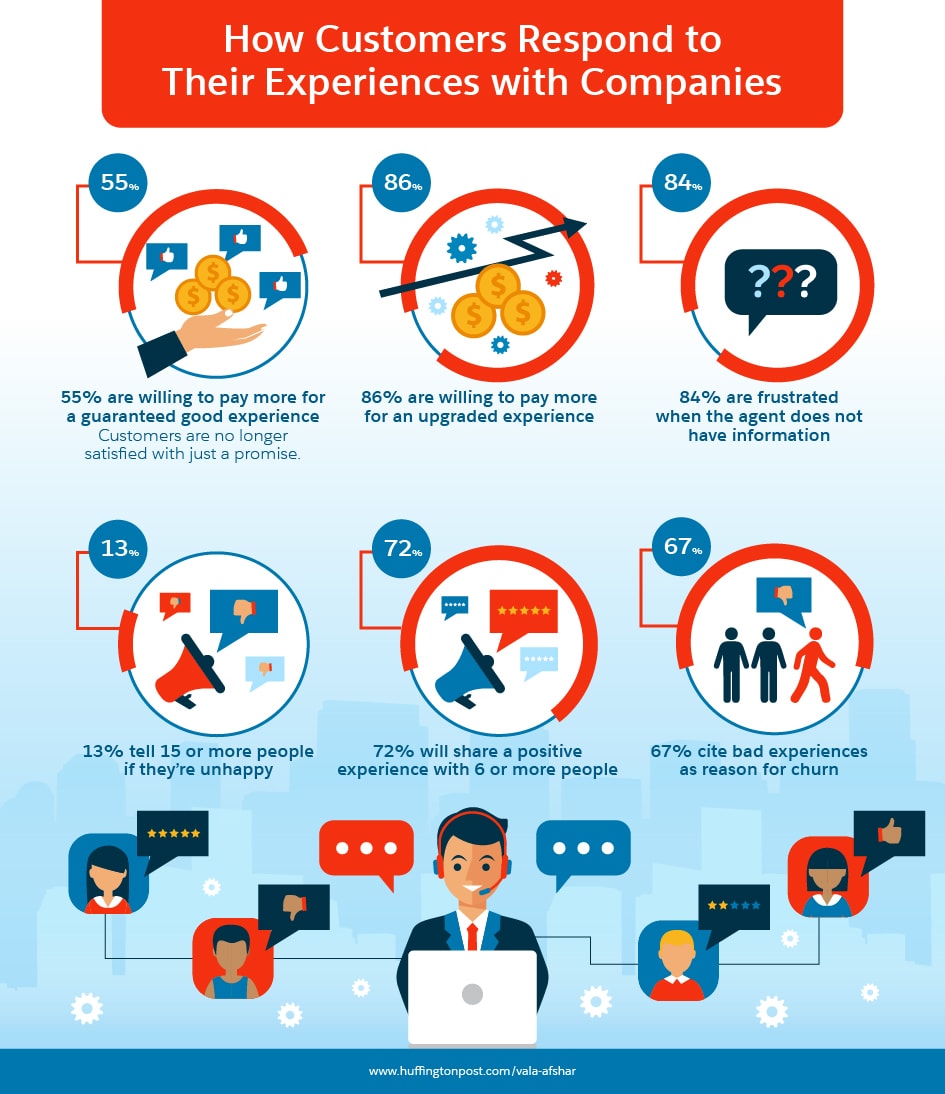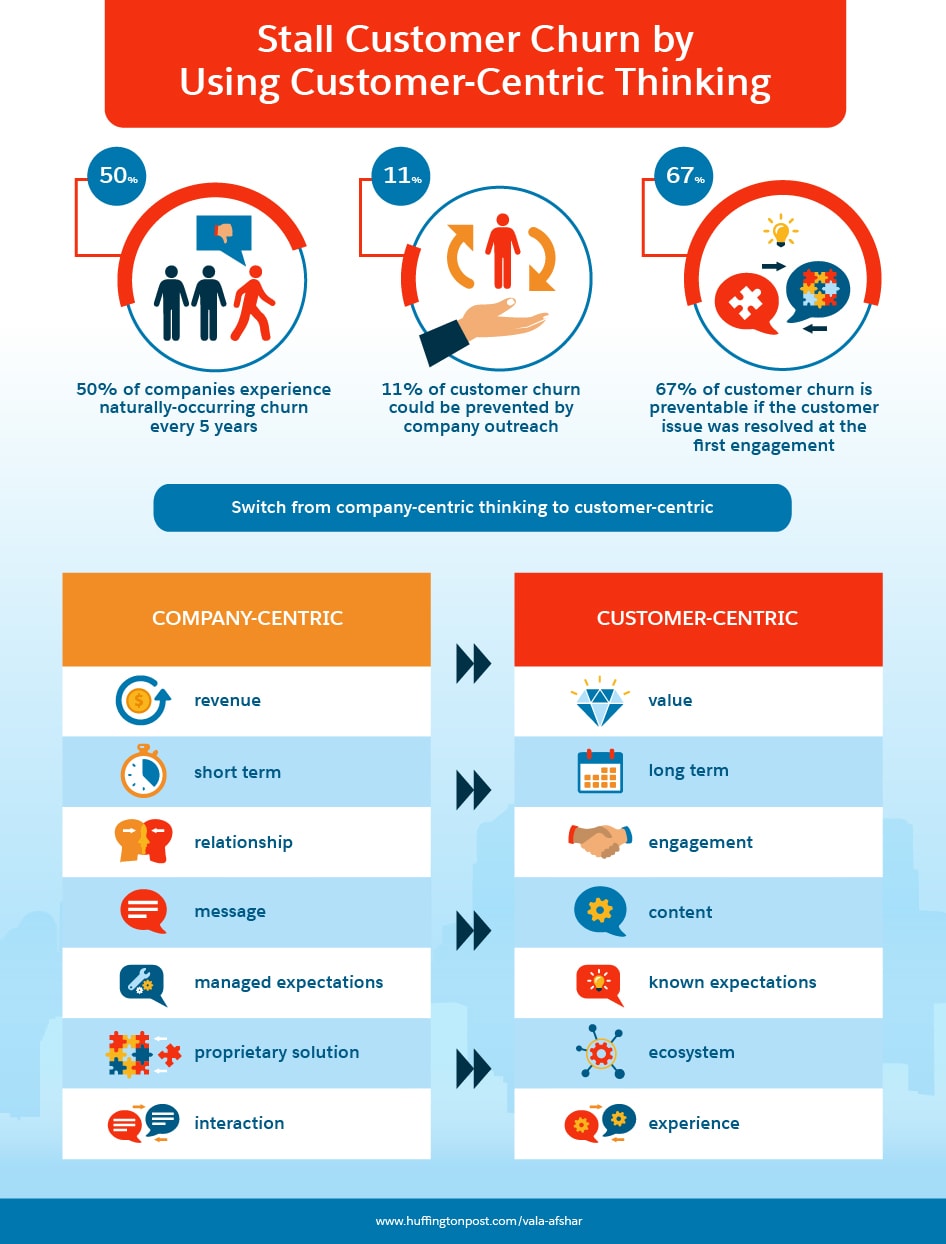You know the stats. You’ve read article after article on best practices for customer service. But still it’s worth a reminder: Gaining new customers is more expensive than keeping current customers, and 25 out of 26 customers will leave without ever complaining. Most importantly, 85 per cent of customer turnover is preventable with better service.
Perhaps you’re looking at CRM solutions to help your reps maximize their time and effort. And you’re trying to attract the best and the brightest: dedicated, life-long customer service professionals.
Chances are, you’ve run into two problems:
- There aren’t enough well-trained reps out there to cover your needs.
According to a government report, most customer service jobs are given to untrained young adults who are new to the workforce, or to people new to the Canadian workforce. The best you can do in most cases is hire people with the potential to be great reps. - You spend time, money, and effort training new staff, but have higher turnover than you want.
According to that same report, most new jobs in customer service will come from the sector’s high turnover rate—as much as 25 per cent, compared to national averages near seven per cent.
You could solve both of these problems with one solution: better customer service training.
How Customers Respond to Their Experiences with Companies
- 55% are willing to pay more for a guaranteed good experience
- Customers are no longer satisfied with just being promised a good experience
- 86% are willing to pay more for an upgraded experience
- 84% are frustrated when the agent does not have information
- 13% tell 15 or more people if they’re unhappy
- 72% will share a positive experience with 6 or more people
- 67% cite bad experiences as reason for churn

What Do Your Customers Want?
Any training program must start and end with what your customers want. Your customers are unique, so you’ll have to investigate specifics with customer interviews, surveys, and customer journey maps. In general, however, customers want the same basic things. Let’s call them the Five Cs.
Comfort
Talk to customers in a friendly manner using language they might use. Answer their questions and address their issue on whichever platform they’re on, whether that’s by phone, email, social media, or live chat right on your website. Offer in-store customers a seat, beverage, or snack.
These are all ways you can make your customers more comfortable. More comfort equals more cooperative, calm, and optimistic customers.
Consistency
Whether it’s a representative’s ability to instantly pull up a customer’s history, all reps quoting the same return policies, or simply maintaining call center hours, consistency is important. Not only are customers more comfortable when they know what to expect, but they will also appreciate they are getting fair treatment no matter how much they’re spending with your company.
Clarity
Fifty per cent of customers say representatives fail to answer their questions. A lack of clarity causes confusion and frustration, often spawning additional customer service tickets because the customer was expecting “25 per cent off the cost” instead of “25 per cent more product.” Instead of letting miscommunications confuse both reps and customers, train your staff to say exactly what they mean, repeat issues back to the customer, and ask for clarification often.
Care
Most customers who seek out customer service are already confused, frustrated, or otherwise having a rough time of it. Being able to show them that their concerns are important to you is just as important, if not more important, than actually solving their problem.
Can (Not Can’t)
No service agent answers the phone, “How can’t I help you today?” Why? Because customers don’t want to know what you can’t do for them. They want to know what you can do. The word “no” is an instant wall between them and what they want. Have your agents respond with helpful solutions using positive language. Give them the training and power to solve problems.
Stall Customer Churn by Using Customer-Centric Thinking
- 50% of companies experience naturally-occurring churn every 5 years
- 11% of customer churn could be prevented by company outreach
- 67% of customer churn is preventable if the customer issue was resolved at the first engagement
- Switch from company-centric thinking to customer-centric:
- Company - centric
- Revenue
- Short term
- Relationship
- Message
- Managed expectations
- Propietary solution
- Interaction
- Costumer - centric
- Value
- Long term
- Engagement
- Content
- Known expectations
- Ecosystem
- Experience
- Company - centric

Stay Focused on the Customer
Customers are the driving force in any business, but many organizations get too caught up on the bottom line to stay focused on service. The customer may not always be right, but they always have the power to talk about your company on social media. One negative post will take as many as five positive ones to rebalance customer perception of your brand.
When training your team, keep the focus on your customers by:
- Reminding your reps to see the situation from the customer’s perspective
- Sharing interview, survey, and customer journey findings with your whole team as they develop
- Offering incentives based on positive feedback, instead of metrics such as time spent on each call
Train by Example
How can you instill the Five Cs in your team while keeping the focus on the customer?
Train them by example. It’s one thing to have a list of strategies and policies for reference, or even for memorization. It’s another to see the importance of employing them each and every time, and still another to be able to use them when communicating with the 35 per cent of consumers who will lose their tempers with your reps.
Ways to train by example include:
- Videos Rather than reading straight text, actually seeing real people in frustrating or pleasant situations will help your reps put themselves in a customer’s shoes.
- Interactive Simulations Customer service agents can practice making choices in common situations before the experience of real customers is on the line.
- Role Playing Asking your reps to act out situations as customers emphasizes that customers are just people, too.
- Training Exercises Interactive exercises where team members learn through taking action and having experiences that make them question their natural behaviours lead to greater understanding and personal responsibility.
- Internal Customer Service By far, the best way to train by example it to lead by example. Top-down customer service within your organization will foster a company culture of great service, rather than just company policies.
Empower and Inspire Your Agents
One sure way to increase both customer and representative satisfaction in one fell swoop is to give your reps the power to please. Sure, you want to stay consistent with company policies, but no customer wants to hear, “I can’t do that. It’s against company policy.” Or worse, “Sorry. There’s nothing I can do.”
Your Customers Know What They Want. It’s Up to Your Company to Give It to Them.
- 70% of companies that deliver best in class customer experience use customer feedback
- Industry average: 50%
- Customers are thirsty for more information and knowledge
- 56% of customers just want the right answer
- 64% do not trust the information they’re given
- 44% confirm that they have received the wrong answer
- Feedback - Experience / End to End process - Actionable insight

Make sure there’s always something your service agents can do by allowing them to make decisions that promote customer loyalty. Don’t make it a hassle to get authorization for refunds. Be readily available for those clients who immediately demand to speak to a manager. And back up your agents when they make a decision.
To inspire your team:
- Hold your reps accountable—for both the good and the bad. Praise and thank them for boosting customer interactions and upselling. Don’t shy away from tough discussions about performance.
- Emphasize the power that agents have to propel your company to success.
- Share customer feedback with your reps so they can see how their interactions directly affect a customer’s day.
Train Quickly, Train Often
Finding the time to train your staff effectively can be challenging. It’s why you try to hire experts and people who truly enjoy helping others. You want to keep costs low and maximize your resources, so just pulling one team member away for a few minutes can be hard. And if you don’t want to deliver the same training over and over again, you’ll need to pull a lot of team members off the floor at a time.
Many managers resort to one or a handful of big training sessions per year. Others only train new hires once. The problem with these strategies is that your agents’ skills may fade, and more importantly, so will their dedication. They’ll get caught up in their own day-to-day, forget to focus on the customer, and panic when something they weren’t trained to handle occurs.
Instead, the best way to maintain constant improvement and continued focus on the customer is short, regular training sessions. Many companies hold pre-shift or weekly meetings to go over schedules, review performance, and plan for the future. These meetings are also a great time to inject little bits of training into the agenda. Many exercises take just a few minutes to complete. You could also open up the floor to your staff to bring up tough situations they recently encountered and talk through those issues as a team. Not only will your staff learn from real-life experiences, but you’ll also encourage ownership of mistakes and celebrations of group successes.
Training your customer service staff isn’t easy. If it were, the market would be full of fabulous experts to hire. Invest in your own training programs to turn unhappy customers into customers making rave reviews, giving you both marketing fodder and higher employee satisfaction.




